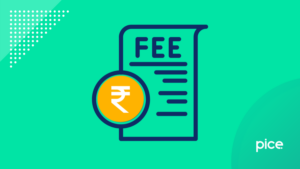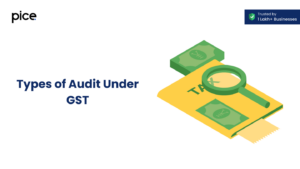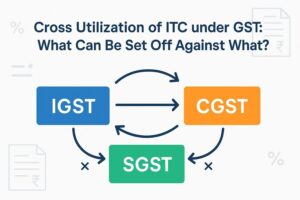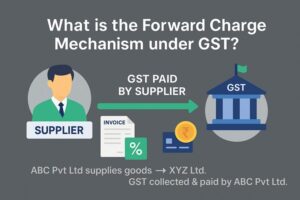Time of Supply of Goods Under GST Explained
- 16 Oct 24
- 9 mins

Time of Supply of Goods Under GST Explained
Key Takeaways
- Time of supply defines when GST liability arises.
- For forward charge, it's based on the earliest invoice, due date, or payment.
- Under reverse charge, the recipient's liability follows goods receipt or payment.
- Vouchers’ time of supply depends on their type—single or multi-purpose.
- Knowing the time of supply ensures timely GST compliance.
Understanding the time of supply in GST can be very important for any supply of services and goods to the consumer. This helps in avoiding any kind of penalties and efficiently managing cash flows. It defines the time at which goods are considered to have been supplied or services said to have been rendered for taxation purposes.
This blog explains the time of supply for goods and services under the current single taxation system to ensure accurate payment of taxes and business compliance.
Time of Supply of Services Under GST Explained
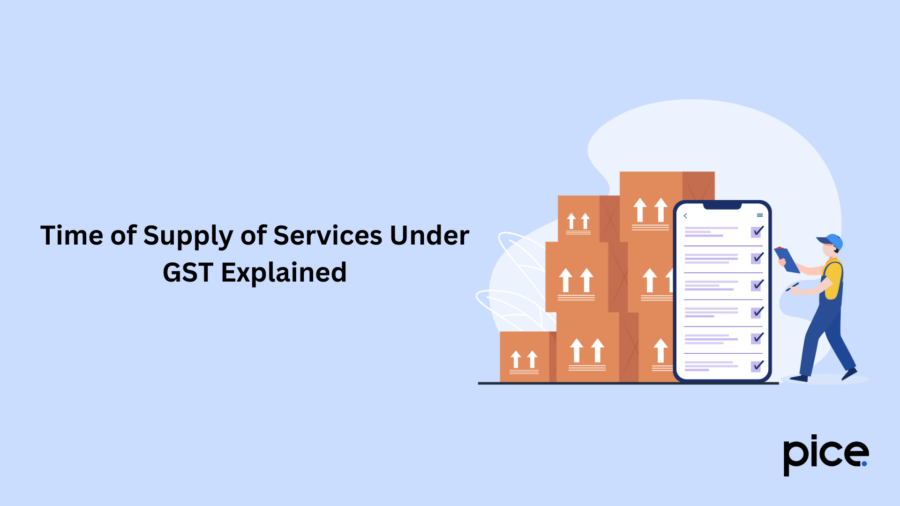
In any taxation system, identifying the time of taxation is essential. It marks the moment when tax must be paid on a taxable event. This framework helps establish the timing of tax liability. One of the key differences between the earlier indirect tax system and the current GST regime is the definition of a taxable event.
Previously, the taxable event was linked to the sale or removal of goods, but under GST, it is defined as the supply of services or goods. Therefore, it is important to reconsider how the time of taxation functions under GST and understand how it applies to the provision of services.
Time of Supply of Goods & Services Under Forward Charge
Forward charge, also known as normal charge mechanism, refers to the process where the supplier is responsible for collecting and remitting the rate of tax to the central or state government. In the current tax regime, different types of transactions for businesses follow this method.
Time of Supply of Goods Under Forward Charge
The GST (CGST and SGST/UTGST or IGST, depending on the case) obligation arises at the earliest of these:
- Issue of Invoice Date: The date when the supplier generates the invoice.
- Due Date for Issue of Invoice: The deadline for issuing the invoice. If goods are moved as part of the supply, the invoice must be issued upon removal. If there is no movement, the invoice must be generated when the goods are delivered to the recipient.
- Payment Receipt Date: The receipt of payment date is determined by whichever happens first—when the payment is recorded in the recipient's accounts or when the payment is credited to their respective accounts.
Time of Supply of Services under Forward Charge
Similarly, under the supply for services, the GST liability arises at the earliest of the following:
- Issue of invoice Date: The date when there is an invoice issued.
- Due Date for Issue of Invoice: For the provision of services, the time of issue of invoice should be within 30 days of the supply date. However, for banking companies, the time frame extends to 45 days.
- Payment Receipt Date: The receipt of payment shall be determined either by the date it is recorded in the books of accounts or credited to the bank account.
In cases where no invoice is available, the time of supply shall be the earlier of the last date for issuing the invoice or the receipt of payment date. For services, the invoice must be generated within 30 days of providing the service.
Time of Supply of Goods & Services Under Reverse Charge
Under the reverse charge mechanism, the burden of tax liability payments shifts to the recipient or buyer of goods or services, rather than the supplier as seen in the forward charge system. This approach was introduced to ensure better tax collection from unorganised sectors, enabling the government to track and tax previously untaxed goods and services.
In the earlier tax regime, reverse charges were applied to both goods and services. For purchases from unregistered dealers, the registered recipient of supply was liable to pay the purchase tax. Similarly, in the case of certain notified services, the recipient was responsible for paying service tax under reverse charge. Depending on the type of service, the tax burden either fell entirely on the recipient or was shared between the service provider and the recipient.
Time of Supply of Goods Under Reverse Charge
GST (CGST, SGST/UTGST or IGST, as applicable) liability arises at the earliest of the following events:
- Receipt of Goods: The date when the recipient receives the goods.
- Date of Payment: The date of payment of tax by suppliers depends on when is the earliest of either when there is an entry in books of accounts or credited to their bank account.
- 30 Days from Invoice Date: If no invoice payments are made, the date will be the day immediately following 30 days from the invoice date.
If these dates are not determinable, the time of supply can be the date when it is recorded in the books of accounts of the recipient of supply.
Time of Supply of Services Under Reverse Charge
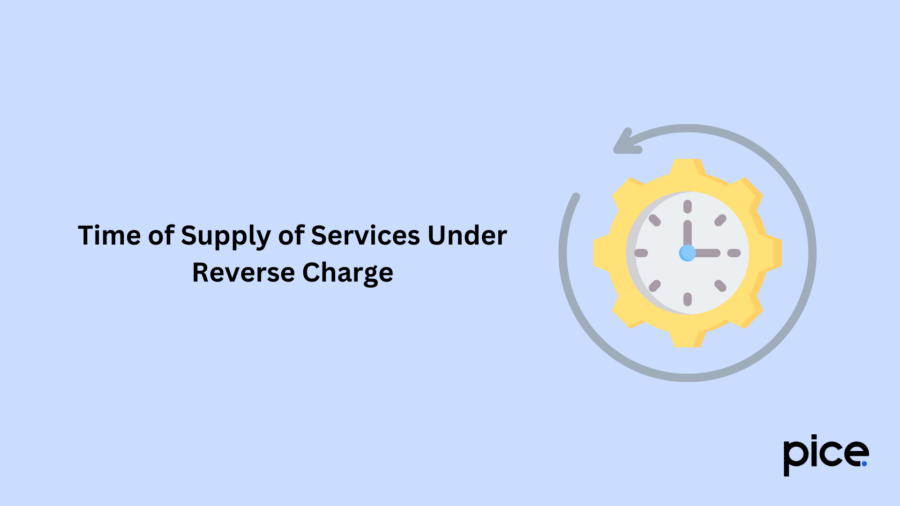
For services, GST liability arises at the earliest of the following:
- Payment Date: Either the date recorded in the recipient's books of accounts or the date it is credited to the bank account, whichever is earlier.
- 60 Days from Invoice Date: If payment of tax is not made within 60 days of the tax invoice, the time of supply will be the day after those 60 days expire.
If the relevant dates cannot be identified, the time of supply shall be the date when the recipient made an entry in the books of accounts.
Time of Supply for Vouchers
Under the CGST Act, 2017, a voucher is an instrument where there is an obligation to accept as payment or partial payment for the supply of goods or services. The specific goods, services or suppliers are either mentioned on the voucher itself or included in related documentation, such as the terms and conditions of its use. For the supply of vouchers, the time of supply is the issue date of the voucher if the supply can be identified at that point and the redemption date of the voucher.
Single-purpose vouchers are also known as open-end vouchers. For example, a voucher can be issued only for purchasing a blender or for the service of a massage session. On the other hand, there are general-purpose vouchers that can be used for various items or services. For example, a ₹1,000 voucher from a popular retail chain might be redeemable for any product in their stores.
For the single-purpose vouchers, where the quantity of the vouchers is known when they are being issued, then the time of supply is the date that the vouchers are issued. For generic vouchers, the time of supply could be the time at which those vouchers are used.
What Are the Different Situations When You Cannot Identify the Time of Supply?
You cannot identify the time of supply during the following situations:
- When no invoice for supply or receipt of payment date is available to determine the supply timeline
- In cases where multiple relevant dates exist and the earliest date for filing of return is unclear
- For a continuous supply of goods or services where specific billing intervals are not defined
- If a voucher is issued without clear information about the goods or services being supplied at issuance or redemption
- When the reverse charge mechanism applies but the dates for receipt or payment are uncertain
- For advances received without associated invoice payments or clear supply details
If you cannot determine the time of supply during the above situations, then the time of supply will be the date when the periodical return filing is done or the date when the tax rate is settled.
Conclusion
Understanding the time of supply in GST is crucial for determining when the correct tax liability arises on goods or services. Whatever the case, whether applying forward or reverse charge mechanisms or processing vouchers, it is beneficial to know the time of supply in the GST rate so that there is proper business compliance with the GST laws.
Using such guidelines, businesses are in a position to avoid such confusion and make accurate tax payments on time as a way of honouring their tax obligations.
💡If you want to streamline your payment and make GST payments, consider using the PICE App. Explore the PICE App today and take your business to new heights.
 By
By 






